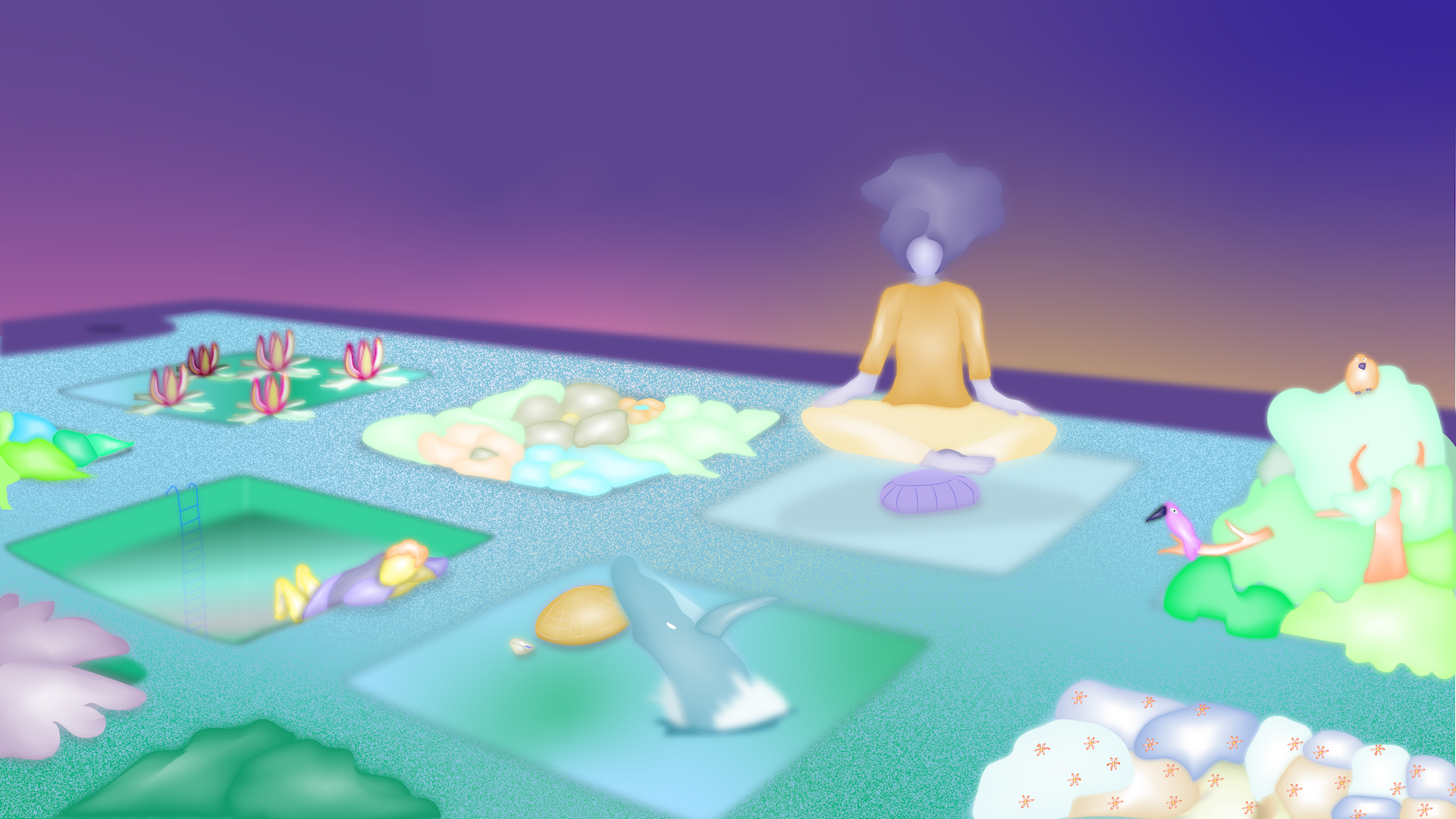
use your tools
Curriculum
Dear smartphone, my beautiful mirror. How does meditation teach us to observe our digital addictions? And beyond that, what do our digital uses teach us about ourselves?
1. Reptilian brain and social networks: our addictions come from an unsatisfied need, or from wounds, fears or desire to exert control
2. How the sausage is made: our caveman brain trapped in (very) captivating machines that draw our enslavement from our constant search for dopamine
3. Recognizing and feeding our digital needs (or neuroses): the use of self-compassion to our digital life
Navigating between the three levels of connection: how does the ability to take a conscious look at our different uses allow us to better organize our (de)connection?
The situations in which we are in contact with technology are different. It is not all black and white. It is important to identify them well in order to, with conscious attention, circumscribe our relationship with digital technology to very specific tasks.
1. The deep connection: when the immersion is total (intense work, video games), it is decisive to train your attention to avoid dispersion
2. The soft connection: when the smartphone’s solicitation is punctual. It is then a question of remaining anchored in the present moment in order not to be caught up in a digital vortex and to divert our attention elsewhere than on what surrounds us.
3. Disconnection: at certain moments, it is precious to be naked, without technology at all. It favors contemplation. How can we organize our lives to allow for sanctuary moments where we can disconnect completely from the internet?
Connect to your sources of joy in using digital interfaces, so you never lose your way in the digital savannah.
How can the tools of mindfulness allow us to focus on what lifts us up rather than what scatters us?
1. What is it about the internet that causes you to expand? Entertainment, creativity, curiosity, learning and wandering: the different sources of digital joy
2. The bicycle for the mind : Steve Jobs vs. the hamster wheel: in our devices, two tendencies coexist: (1) the fragmentation of attention, (2) a fertile attention for the awakening of the mind
3. Formulate your intention to navigate an ecosystem that is dangerous for your attention while regularly returning to your center
The web is a place of social interaction. Practicing noble speech in this space allows us to make it a place of peace and harmony. It is also a place to connect to one’s humanity by sharing vulnerability, promoting beauty (and thus contributing to the inspiration of others), and practicing gratitude. As in “analog” life, on the internet meditation is about learning to use your words to do good.
1. Practicing noble speech on social networks: how not to feed a selfish voice within?
2. Non-reactivity and abrasive publications: how can we observe ourselves so as not to react impulsively to the destabilizing content we see?
3. Vulnerability as an antidote to superficiality and the staging of oneself on the Internet
4. Doing good deeds on the internet: how is it possible to practice karma yoga online?
Meditation is an invitation to slow down and be sober, and this also applies to our digital practices. Why go on a “digital diet”? How does a “digital ecology” practice allow us to take care of ourselves, others and the planet?
1. Digital pollution is an invisible reality: the imperative of responsibility induced by meditation invites us to become aware of the consequences of seemingly harmless acts
2. Tidying up your desk and turning your computer into a digital Japanese garden: transforming your environment to make it neat, practical and ergonomic
3. Recognize the importance of aesthetic experience and the power of beauty as a springboard for imagination and inspiration
4. Tidying up outside and cleaning up inside: sorting out, letting go of what is inert inside you also allows you to cultivate your flexibility and agility. Be light!
If you have come this far, it is because, like me, you think that the digital world is indispensable to us and that our role as meditators is to imagine how to live in harmony with it.
As a public space traversed by discourses, norms and values, it is far from being neutral. It is what we make of it. The question is: how can we participate in the elaboration of another digital world? Where to direct our energy in consciousness? What can we do to support a digital space that is greener, more inclusive, more respectful, more benevolent?
1. Google Doc vs. Open Office: how to recognize both the practicality of the tools developed by the digital giants (the design is certainly on the side of GAFAM) and at the same time the importance of developing virtuous alternatives? How can we question what is right for us with the help of mindfulness?
2. Black Friday vs. the age of maintenance: how can we use meditation to observe our tendency to consume and instead favor the lifespan of the existing? Thus, we can favor repair and reconditioning over programmed obsolescence to avoid succumbing to the urge to buy



